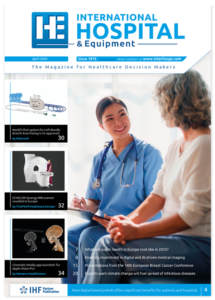Breakthrough in vivo gene therapy targets newborn blood stem cells
Scientists at the San Raffaele Telethon Institute for Gene Therapy have unlocked a remarkable biological window – a fleeting period immediately after birth when circulating blood stem cells become uniquely accessible for genetic modification directly within the body. This discovery could transform treatment approaches for devastating genetic blood disorders, offering hope without the invasive procedures that have defined gene therapy for decades.
Nature’s migration highway reveals therapeutic opportunity
The breakthrough, published in Nature on 28 May 2025, emerged from a fundamental observation about developmental biology. During the first two weeks of life, newborn mice harbour dramatically elevated numbers of haematopoietic stem and progenitor cells (HSPCs) in their bloodstream – a biological phenomenon that researchers have now harnessed for therapeutic intervention.
This cellular abundance occurs during a critical migration phase when blood stem cells journey from their foetal liver residence to establish permanent colonies in bone marrow. The research team, led by Professor Luigi Naldini and Dr Alessio Cantore, recognised this natural trafficking pattern as an unprecedented opportunity for in vivo blood stem cell gene therapy.
Dr Michela Milani, the study’s first author, captured the elegance of this approach: “After birth, blood stem cells need to move from the liver, where they have resided throughout the last months of pregnancy to their definitive home in the bone marrow. We found that as they so travel in the circulation they can be more easily accessed by intravenous delivered vectors and thus be genetically modified without the need to harvest and process them outside of the body.”
Triple therapeutic validation demonstrates clinical potential
The researchers subjected their innovative approach to rigorous testing across three genetically distinct disease models, each presenting unique pathophysiological challenges that would test the versatility of in vivo blood stem cell gene therapy.
In ADA-SCID – a devastating immunodeficiency where patients lack functional lymphocytes – the direct gene delivery approach successfully restored immune system function. The treatment’s effectiveness extended to autosomal recessive osteopetrosis, a debilitating bone disease caused by impaired blood-borne bone remodelling cells.
However, the most compelling validation emerged from the Fanconi anaemia model, a bone marrow failure syndrome triggered by defective DNA repair mechanisms. Here, genetically corrected stem cells demonstrated a remarkable capacity for progressive blood system repopulation, preventing catastrophic bone marrow failure. This therapeutic advantage mirrors observations from human gene therapy studies, where corrected cells naturally outcompete their defective counterparts – a biological selection pressure that amplifies treatment efficacy over time.
Pharmacological enhancement expands treatment possibilities
Recognising the inherent limitations of relying solely on natural cellular migration patterns, the research team engineered strategies to extend and enhance their therapeutic window. By deploying clinically approved mobilising drugs – G-CSF and Plerixafor – they successfully forced stem cells from their tissue sanctuaries into circulation, dramatically improving gene transfer efficiency.
This pharmacological intervention proved transformative, extending the therapeutic window to older mice whilst simultaneously achieving superior gene delivery rates. The team complemented this approach with optimised lentiviral vectors, engineered for enhanced stability and cellular uptake – addressing technical barriers that have historically constrained in vivo gene therapy applications.
Human translation evidence emerges
The discovery’s clinical relevance gained substantial validation when researchers detected circulating HSPCs in human newborns throughout the first months of life – a finding that directly parallels their murine observations. This cross-species consistency provides compelling evidence that the therapeutic window identified in mice may translate directly to human infants.
Dr Cantore emphasised the clinical implications: “This study provides proof of concept that in vivo lentiviral gene delivery to blood stem cells is feasible during a short but accessible period early in life as a gene therapy strategy for blood disorders. While the efficiency currently remains limited as compared to established ex vivo treatments, it may suffice, if replicated in human babies, to benefit some genetic diseases such as severe immunodeficiencies or Fanconi anaemia.”
Biological mysteries drive future research
The research unveiled intriguing cellular behaviours that distinguish neonatal from adult stem cells, opening new avenues for therapeutic optimisation. Professor Naldini highlighted this biological paradox: “Intriguingly, when we harvest stem cells from the blood of adult mice or humans, even upon mobilisation, they require activation stimuli to enable efficient lentiviral gene transfer. On the contrary, at these early ages, not only there are more stem cells in the circulation, but they are also more permissive to gene transfer.”
This enhanced neonatal permissiveness suggests fundamental developmental differences in stem cell biology – discoveries that could revolutionise gene therapy approaches across age groups if successfully replicated in older patients.
Redefining therapeutic paradigms
Current gene therapy protocols demand invasive procedures: stem cell harvesting, laboratory-based genetic modification, and conditioning chemotherapy that places tremendous burden on patients. The SR-Tiget approach challenges this established framework, offering a minimally invasive alternative that could transform treatment accessibility.
While established therapies like the metachromatic leukodystrophy treatment developed at SR-Tiget have achieved regulatory approval across Europe and the United States, they remain resource-intensive interventions requiring specialised facilities and extensive patient preparation.
Clinical translation pathway
The research establishes critical foundations for human clinical investigations, potentially offering new therapeutic options for inherited haematological disorders whilst dramatically reducing treatment complexity. Key innovations include exploitation of natural cellular trafficking, strategic pharmacological mobilisation, and optimised vector engineering – collectively addressing longstanding challenges in gene therapy delivery and efficacy.
This developmental biology insight demonstrates how fundamental scientific understanding can unlock transformative therapeutic strategies, bridging the gap between laboratory discovery and clinical application through innovative approaches to in vivo blood stem cell gene therapy.
Reference
Milani, M., Cantore, A., & Naldini, L. (2025). In vivo haemopoietic stem cell gene therapy enabled by post-natal trafficking. Nature. https://doi.org/10.1038/s41586-025-09070-3


